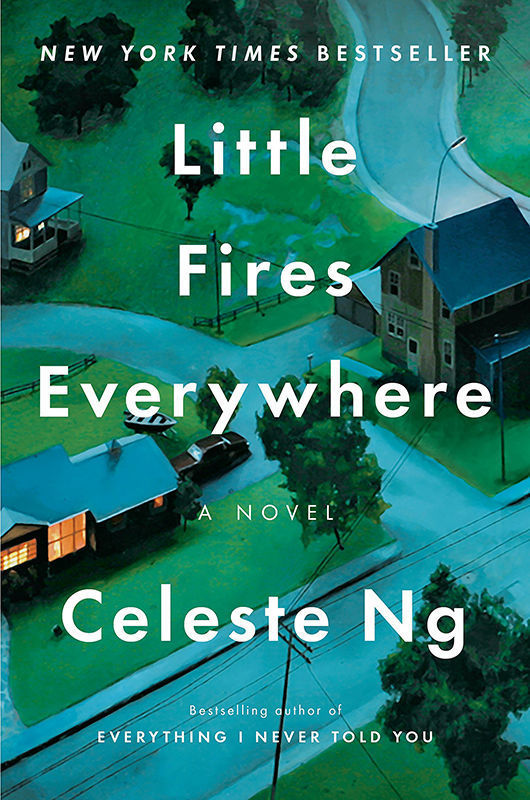The worst part of Celeste Ng’s Little Fires Everywhere is the final 30 pages or so. And not because the ending is a disappointment. On the contrary.
It’s because I felt torn between rushing forward to find out what happens and going slow enough to savor the writing and dwell on the meanings.

Because for the first 300 pages that’s what I had been doing: admiring the author’s lucid prose and its subtle power to deliver insight and wise truths.
“To a parent,” she writes, “your child wasn’t just a person: your child was a place, a kind of Narnia, a vast eternal place where the present you were living and the past you remembered and the future you longed for all existed at once. You could see it every time you looked at her: layered in the face was the baby she had been and the child she’d become and the adult she would grow up to be, and you saw them all simultaneously.”
The paragraph concludes: “It was a place you could take refuge, if you knew how to get in. And each time you left it, each time your child passed through your sight, you feared you might never be able to return to that place again.”
That brief foray into reverie, into philosophizing, is rare in this work of fiction. Ng, who also wrote Everything I Never Told You, delivers the goods through storytelling, character development, her fine observations and perceptions. She has an intimate sense of the humans she writes about, family dynamics, the life of teenagers, the visible appearances of interior lives. She is consistently on target; these are people I know, the suburban America so familiar. Such sweet incisions.
The plotline — and title — point to the tension between the expectations and decorum of the Cleveland suburb of Shaker Heights and the combustible frictions that arise when a mother-daughter pair move in. They not only move into the Richardson family’s rental unit but also into the Richardsons’ lives, igniting little fires as they go, disrupting the order and control of upper-middle-class propriety.
But there are no villains here, no one-dimensional inhabitants of the carefully woven narrative. Each person — and they may start from handy stereotype before acquiring human depth and texture — has unexpected layers, faults, weaknesses, strengths and hidden qualities (however dormant). And one of the book’s appeals is to watch how the characters change and grow by interacting with one another, how they find their place in another’s life.
That narrative essentially pivots on the relationships between mothers and daughters, the intense desire for children, the bonds between birth mother and baby, the effects of those magnetic alliances, and the impact when poles repel, when that bond is broken, when the growing up and moving on is painful.
Because these themes are so strong, however, I must note how casually an abortion is handled by the writer and the book’s characters — at least ostensibly and, perhaps, “casually” by my tastes. That would be an interesting piece to discuss with other readers, in a book club or college lit class: Is the abortion handled casually? Or is it a scalpel used intentionally to expose a deeper lesson?
Of course, the book, too, is about life — what life does to us, how we respond to those forces, how we deal in the present moment with our past. And it’s about personal courage and being true to yourself and finding your way. It’s also simply a good read, splendidly wordsmithed, with characters you care about, dilemmas that pose intractable solutions, people acting on interior drives. And they all pick up speed as they race toward the book’s conclusion.
The ironic thing is, the first chapter points right to that dramatic conclusion, the ultimate fire. And yet when the events gain speed and intensity, you — I, at least — get caught up in the momentum, wondering how it’s going to all turn out, and for everyone.
So I raced toward the ending right along with them. Then a few days later went back to reread and appreciate those artful gifts that demonstrated the care and affection that was there all along. And I was happy to revisit some folks I’d gotten to like and was glad to spend time with again, confident they’d all be OK.
Kerry Temple ’74 is editor of this magazine.